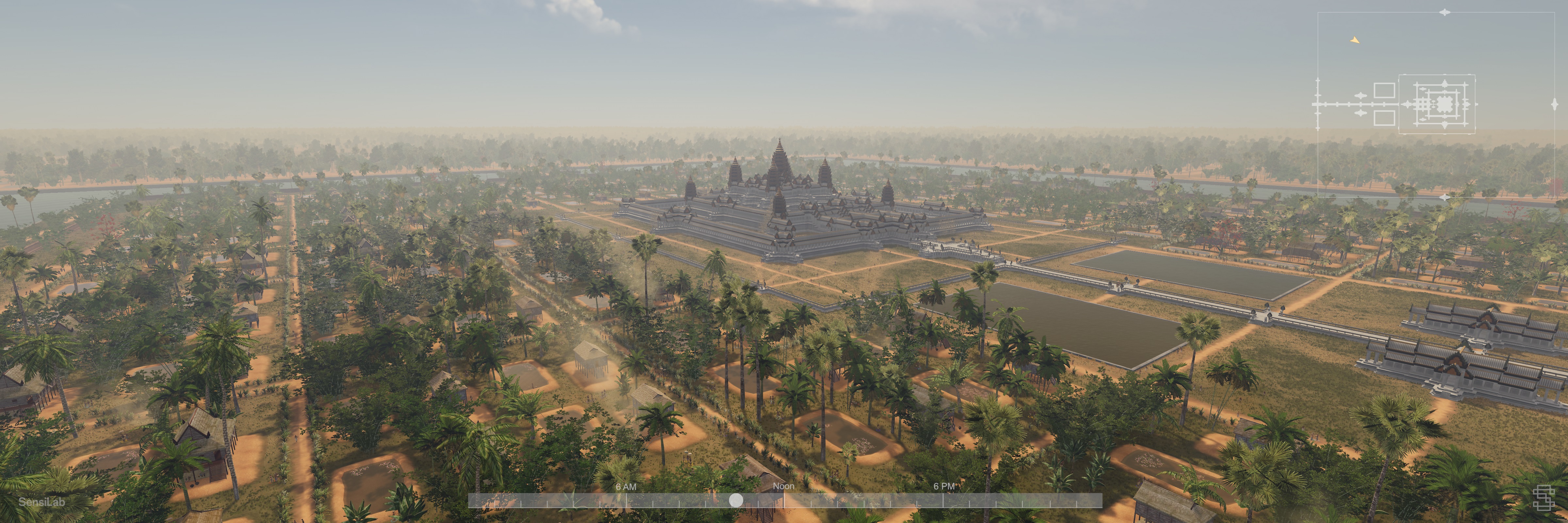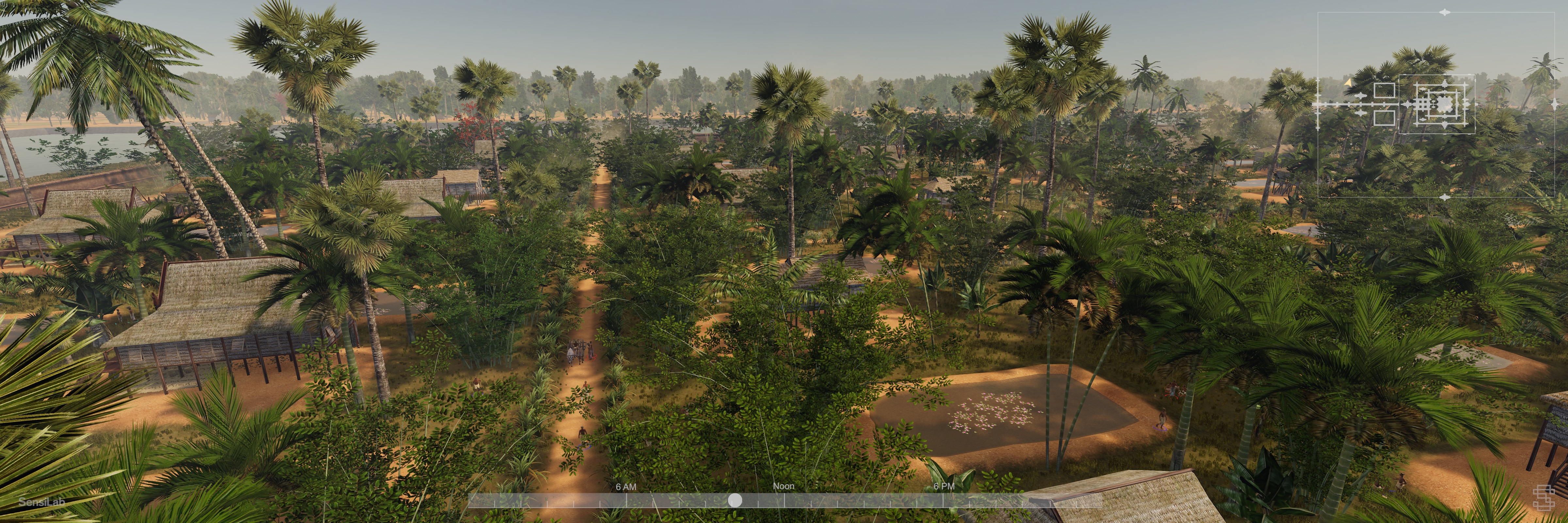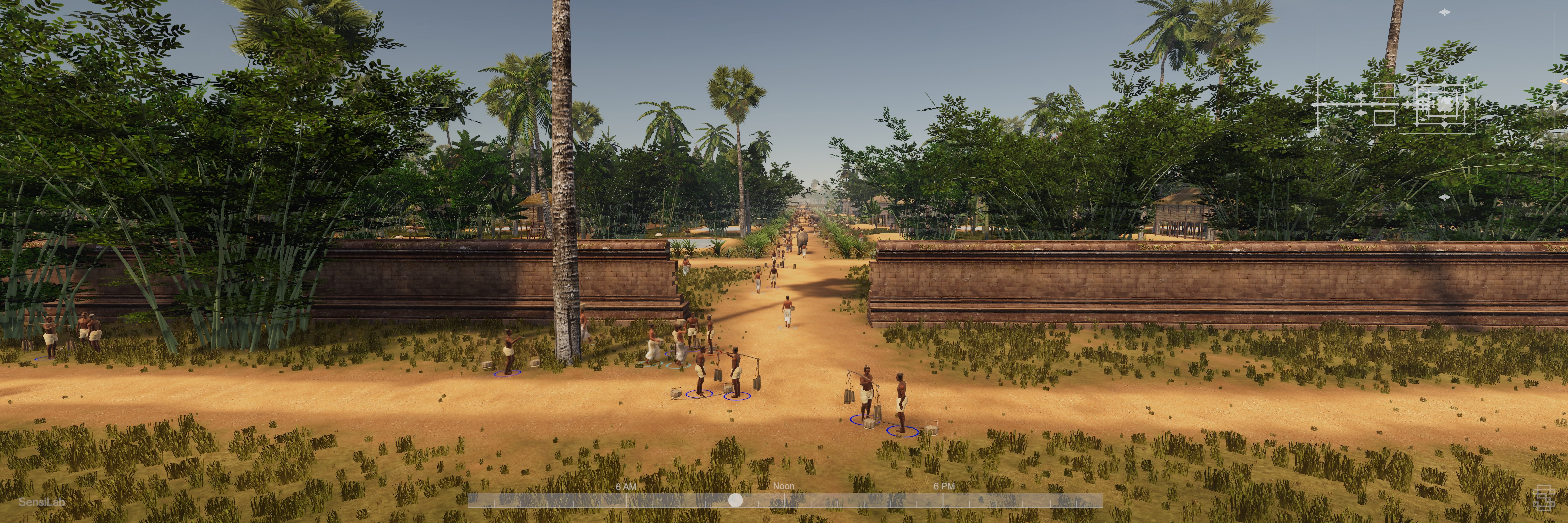
Visualising Angkor
Using 3D Animation and Games Technology to bring Medieval Cambodia to life
The Visualising Angkor project is a long running project within SensiLab that’s using 3D Animation and Games Technology to bring 12th century Cambodia to life. Drawing upon numerous scientific, historical and archaeological sources a digital recreation of the Angkor Wat temple site was created. This recreation involved detailed modelling from architectural drawings, generative algorithms for forest creation (based on archaeological pollen samples to ensure the correct flora for the period), 3D character modelling and animation (including the use of motion capture) and agent based modelling to ensure that the virtual inhabitants of the temple are behaving in appropriate ways.
Apart from myself, the project has had a core team of three others working on it since 2015. It’s lead by Dr. Tom Chandler who provides the overall vision and direction for the project, Brent Mckee serves as lead modeller and animator and Mike Yeates provides graphical expertise, shaders and Unity optimisation.
My contributions to the project involved the initial systems architecture, development of the generative forest system, development of the agent based model for the virtual inhabitants and engine optimisation to ensure that the visualisation runs well.
The idea for the simulation stemmed from some early 3D rendered videos that Tom Chandler put together during his PhD study. After discussion between him and I in 2015 we decided to take some of the assets from the videos and move them into the Unity Game engine. I oversaw this process, laying the ground work and project structure so that old assets could be moved over and new assets would be easy to add in the future. A major component of this work involved taking LiDAR scan data from aerial surveys of the site and translating it into 3D geometry which would serve as the base terrain for the simulation.
I also developed a system that would generate the forests surrounding the temple. This system had to take into account the the underlying terrain (from the LiDAR data) and various other data like the typical house size and distribution of different trees and use these constrains to generate a convincing 3D forest. The system could be seeded differently each time and would generate a unique forest each time the simulation was run.

In order to fit into tight polygon and batch limits within the game engine I needed to implement a number of optimisations to ensure a smooth framerate in the resulting simulation. After the forest system generated a new forest, an optimisation system would combine each different tree into a single batch (using a shared texture atlas). This allowed large portions of the forest to be rendered at the same time, reducing the bottle neck between the CPU and GPU. A more modern technique would be to use GPU instancing however at this point in the project Unity did not support this.
The other major part of the simulation I worked on was the agent based simulation that controls the behaviours of the inhabitants of the temple. The population of the temple is divided into different archetypes and each of them perform different actions over the course of simulation. The actions performed are determined by simple Behaviour Trees that were developed for each of the different archetypes. A navmesh was also created for the whole temple complex and the pathfinding of the agents is achieved through an optimised implementation of the A* search algorithm.

Video
Field Trip
The team has also undertaken two field trips to Cambodia for the project. On these trips I undertook 3D scanning surveys of various archaeological digs/sites and museum pieces. This captured data was digitally restored and optimised to serve as new assets within the simulation. This significantly cut down on modelling time and added a higher level of realism to the visualisation. We also visited with cultural institutes within Cambodia with a goal to get the simulation on display within the National Museum.

Publications
Chandler, Tom ; McKee, Brent ; Wilson, Elliott ; Yeates, Mike ; Polkinghorne, Martin. / A new model of Angkor Wat : simulated reconstruction as a methodology for analysis and public engagement. In: Australian and New Zealand Journal of Art. 2017 ; Vol. 17, No. 2. pp. 182-194.